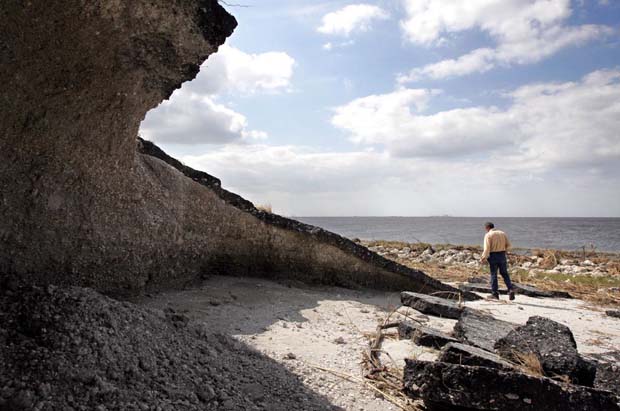Lake Okeechobee Pollution Swells To Near-Disaster Levels
[dropcap]S[/dropcap]outh Florida’s Lake is one of the state’s most celebrated sites, but this month is may also be a pending environmental disaster. One of the largest lakes in the United States, it is also one of the most shallow, just nine feet deep on average during normal conditions. Unfortunately heavy downpours over the last few months have left water levels in the lake closer to 15.5 feet. Now some people fear the swollen lake may be ready to burst. If that happens, decades of pollution and waste that have gathered in Okeechobee could soon flood the surrounding region, the New York Times reports.
The swollen lake has already sent polluted waters into nearby estuaries. The pollution — runoff from farms, home septic systems and golf courses — is feeding the growth of toxic algae, which can kill oysters and affect manatees, sea grass and other freshwater organisms.
“These coastal estuaries cannot take this,” Mark D. Perry, executive director of the Florida Oceanographic Society, told the Times. “These estuaries are so important to us, our environment and our economies.”
Meanwhile, the lake pollution — visibly evident in the form of brown, murky water or green algae — is reportedly hurting both tourism and real estate prices.
This year’s flood is actually the reverse of the situation just six years ago, when drought allowed state officials to remove 1.9 million cubic yards of sediment from the bottom of the lake. Tests on that “muck” revealed elevated levels of arsenic, pesticides and other chemicals.
The Army Corps of Engineers, which manages the dikes around the lake and the flow of water out of Okeechobee, met with local residents last week to discuss water quality issues. Representatives explained that there is a lack of federal funding to maintain the failing dam systems and that maintaining both the lake and the surrounding area is a delicate balancing act.
Federal funds aren’t the only monies in short supply. Florida’s state budget may not support many abatement activities. According to the News-Press, the 2014 budget would cut $10.4 million from the Florida Fish and Wildlife Commission, the state agency in charge of protecting water and wildlife. This would include $600,000 from the Lake Okeechobee restoration budget and $854,000 in manatee rehab funds. As if that weren’t enough, another $839,000 is about to be cut from the state’s harmful algal bloom program.
But with all of these problems, Lake Okeechobee isn’t completely suffering. “The lake is absolutely beautiful right now if you go out to the marshes,” Paul Gray of Audubon Florida told Florida Newszap. “It’s got clear water, wading birds and a lot of fish.” But all of that could also be at risk if the next two months bring any major hurricanes and more rain. “If a lot of rainfall comes and it gets two or three feet deeper, we could lose that beautiful marsh,” he said. “It took years to get to this point. It could be destroyed very quickly.”


